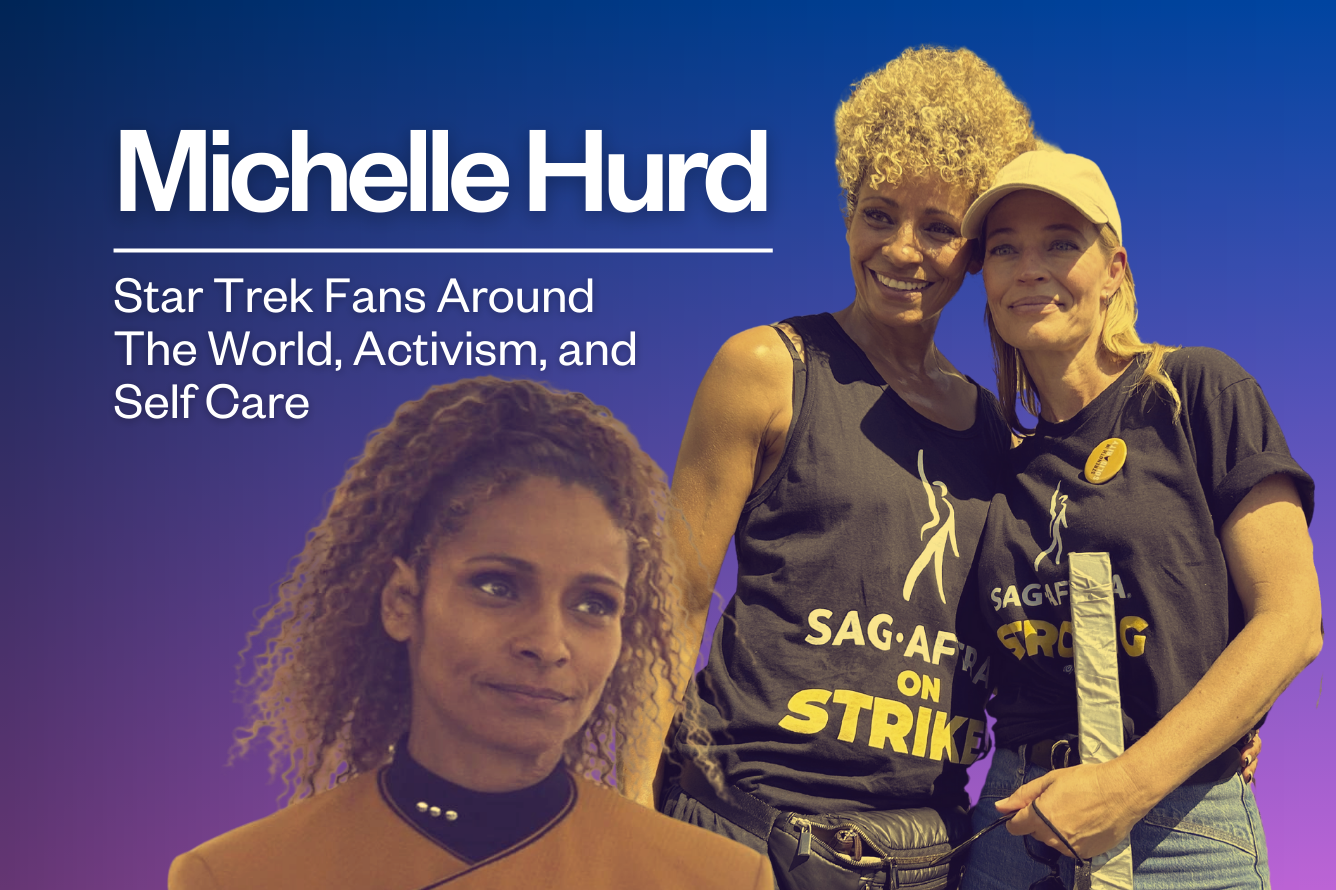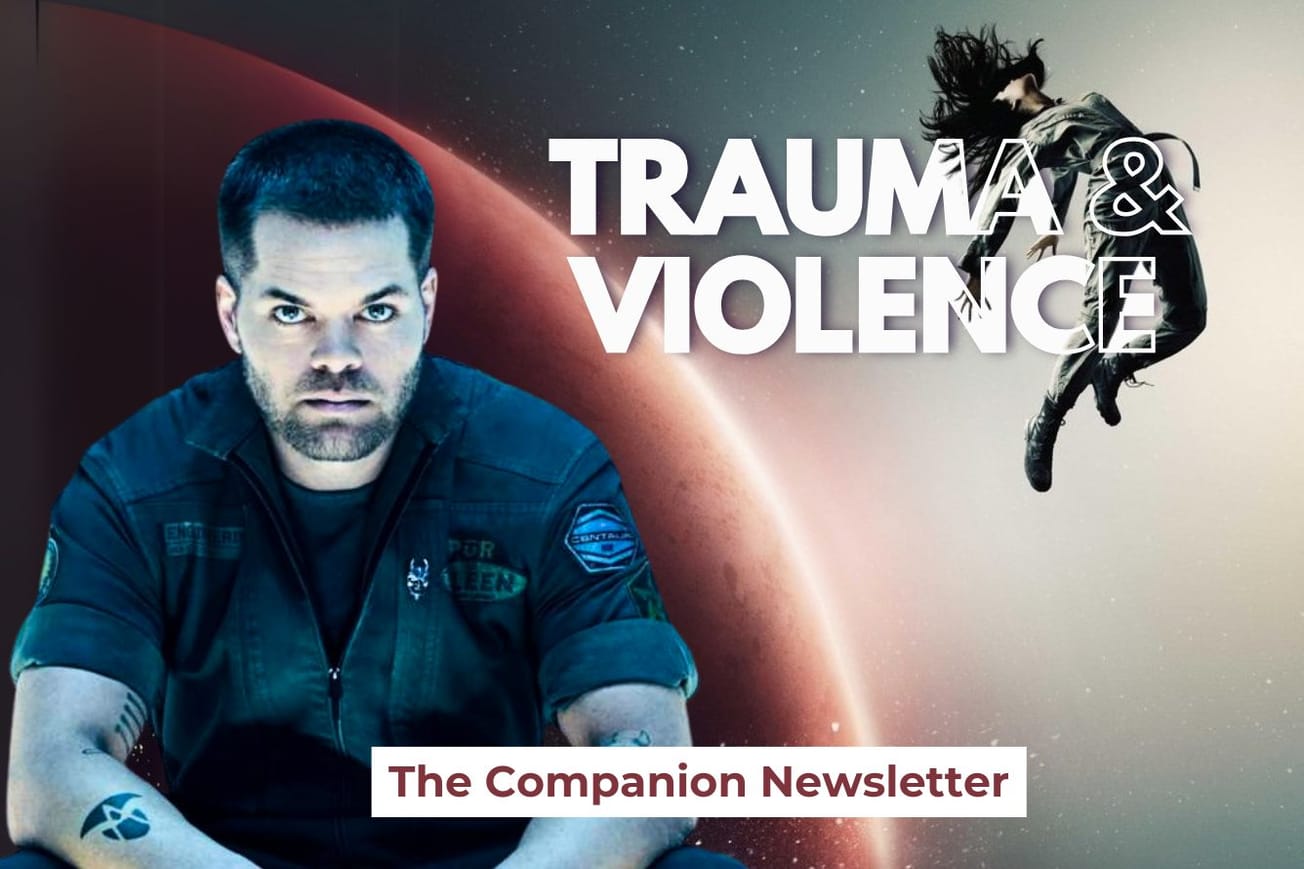Every Star Trek fan dreams of being able to walk on the bridge of the USS Enterprise but few are as fortunate as John Putch. Admittedly, as a showbiz professional, the actor-turned-director has had opportunities that most fans get. Even in Hollywood, however, there are many Trekkies who never get to play in their favorite sci-fi sandbox.
Putch’s place in Star Trek history amounts to more than just a supporting actor credit, though. Because he was cast as a Benzite in two early episodes of Star Trek: The Next Generation, he became the first actor in the franchise to play different characters of the same alien race, a cost-cutting measure that defined the entire race across their later appearances, from Star Trek: Deep Space Nine all the way to Star Trek: Lower Decks, where a baby blue Benzite can be frequently found aboard USS Cerritos.

“I was way into science fiction as any teenage boy would be,” he tells us. “We only had three broadcast channels where I grew up in Pennsylvania, so we didn’t really get much, but I do remember the original Star Trek. It was a huge thing for a kid in the late ‘60s, so I was all over that show. Then, years later, as an adult, I used to watch the reruns and just loved, loved them for a whole different reason the second time.”
Going from TV viewer to screen actor was a natural choice for Putch. His mother was Emmy-award-winning actress Jean Stapleton, who became famous as Edith Bunker in the American sitcom All in the Family (in which Putch made his screen acting debut in 1973). His father, meanwhile, was William Putch, a respected theatre director. Putch Sr. would cast his kids in Super 8 movies he made, and this gave John his first experience at playing non-human characters.
“He would concoct these great stories and star my sister and I and the family dog, or whatever it was,” Putch remembers. “He would say, ‘This week we’re doing a vampire movie and you’re coming in and you’ve got to get through the door and bite your brother, and then he turns into the creature from the Black Lagoon,’ and things like that.”
Probably Putch’s most famous professional acting credit is in Jaws 3-D (1983), in which he played Sean Brody, son of Roy Scheider’s Martin Brody from Spielberg’s classic, Jaws (1975). Long before he made that splash, though, Putch was indulging his love of sci-fi by making films with his high school friends, including a spoof of Star Wars complete with outfits, music, sound effects, and “hand-painted laser beams on each frame of 8mm”.
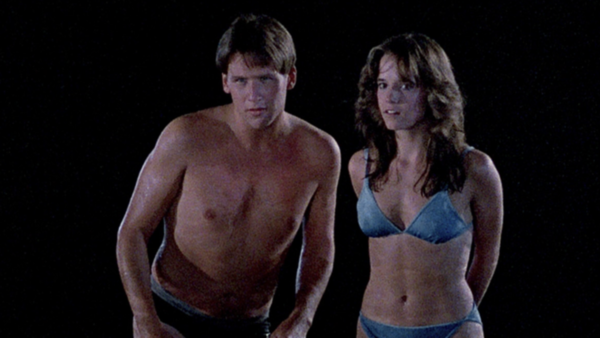
Auditioning for Star Trek: The Next Generation
By the time Star Trek: The Next Generation arrived in 1987, Putch was well known in casting circles thanks to Jaws 3-D and a host of TV appearances. It was on one of the latter, a 1983 TV movie called Kenny Rodgers as the Gambler: The Adventure Continues, that he met Junie Lowry-Johnson, who was the wife of the film’s director, Dick Lowry. She would later become Star Trek: The Next Generation’s casting director.
“I was an actor and she was assistant on that,” Putch explains. “Then years go by and boom, she’s a giant casting director. She would always bring me in for things, as she did with a lot of her other go-to actors that she knew, and we would come in and read for anything she was casting. TNG was one of them. She brought me in on that and I got the part.”
With Star Trek now such a massive brand, it’s hard to imagine the excitement surrounding Star Trek: The Next Generation when it debuted as Gene Roddenberry’s long-awaited follow-up to Star Trek: The Original Series. Naturally, Putch was keen to impress when he was invited to audition for the role of Mordock in the Star Trek: The Next Generation episode ‘Coming of Age’ (S1, Ep18) if ‘Encounter at Farpoint’ is considered a two-parter). But every opportunity comes at a price and for Putch, it would be having to wear a big blue head.
“They put me through the whole casting of the blue-headed guy, the Mordock thing. I had to get a head cast made by the great Michael Westmore and Gerald Quist. They made a mold and sculpted this water-planet being and I became the creature-of-the-week.”
Directed by Michael Vejar, whom Putch remembers as “incredibly gracious and efficient”, ‘Coming of Age’ had two storylines, one concerning an investigation aboard Enterprise that would feed into the later Star Trek: The Next Generation episode ‘Conspiracy’ (S1, Ep25), and a subplot in which Wesley Crusher (Wil Wheaton) is competing in a Starfleet Academy entrance exam with three other candidates, including Mordock.
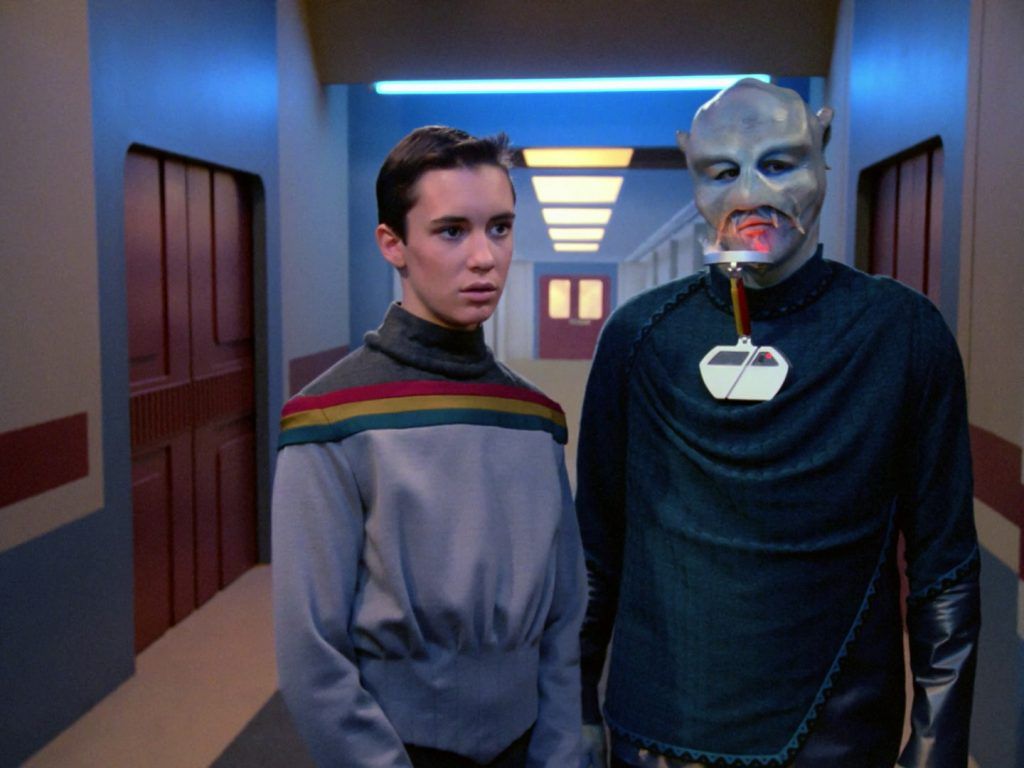
“I don’t remember much about the first one that I did except that we were taking the test to get into Starfleet and all I remember is that I whooped Wesley Crusher’s ass,” Putch recounts. “That was the storyline, that he didn’t get in, although he eventually got in later. There were two other people in there, too. I remember doing that and that the makeup issue was just huge. I worked mostly with that group and I had one scene with [Jonathan] Frakes … I think I interacted with him once and then the rest of the time we were like the B storyline.”
Star Trek: The Next Generation was a high-profile show, so landing a part in it even for one episode was a big deal in an actor’s portfolio. Yet, the amount of makeup Mordock required meant the role wasn’t going to make Putch’s face more familiar to viewers. His features were almost indistinguishable beneath the Benzite mask, which, aside from blue skin, gave him deep eye sockets, cavernous ears, and catfish-like whiskers that protruded from a flap over his nose. Even on set no one recognized him.
“I would come to work at 3:30 in the morning to be made up, and then go to work at 7:00,” Putch says. “So, I would walk in, and I’m in the blue head, and I would go, ‘Hey guys.’ I couldn’t eat. I was literally like this most of the day [Putch leans his head back]. It was rough. And I had to say all that jargon and stuff. Then you’d go and you’d finish, and they’d take your makeup off, and if you passed any of your castmates on the way out, they wouldn’t know who the hell you were. I would have to explain, ‘It’s me!’”
Putch didn’t only have to put up with layers of makeup, however. He also had to wear a device close to his mouth that looked like a curved harmonica on a selfie stick and gave off a light vapor. This presented a big challenge, he explains, as he had to puff on it while simultaneously speaking his lines, which gave the character the curious affectation of intermittently pursing his lips.
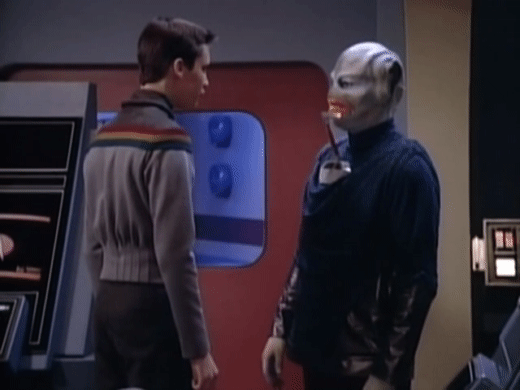
“The hardest part was blowing the thing they put on me, the tray with the ice crystals in it, which puffed because I was from a water planet,” Putch remembers. “This was apparently my breathing device so there had to be moisture or something. The prop man [Alan Sims] would come over between takes and drop little crumbs of dry ice into this little tray that was backlit with an LED. They drilled tiny little holes in the back of this tray that I could blow into, and it would send a little puff up. They always kept asking me, ‘Hey, can you try and make that puff right when you’re saying the line?’ I’d go, ‘No, unless I start talking like this [Putch makes a spitting sound].’
“I tried my best, so I’d do a little puffing on certain reactions, and I’d do one before a line or after a line. If I ever had a ‘P’, I could really get a ‘P’ going. But it was really hard to do because first of all, they gave me a shit ton of jargon to say that you cannot understand.
“I’m telling you, I wished for a dilithium crystal speech or something. But no, these were things I’d never fucking heard of in my life, and it’s hard to memorize that shit, so then you’re doing that, you’re trying to get everything right, and they want you to blow into the crystals. It was really tough.”
The Academy entrance exam Mordock was competing in was inevitably largely computer-based. Hence, Putch also had to wear makeup on his hands, which would be visible when he manipulated the touchscreens. Although this was not as intrusive as the facial prosthetics, it had some quirky features, Putch says.
“They painted my hands [and] I had pinkies, and I had thumbs. They were extra-long. I’m trying to remember if they put thumbs on my pinkie to make it look like a larger pinkie. You’d see it in the inserts of the episode if you see me punching buttons. I can’t remember. On each hand, I had some kind of large thumb either on the pinkie or the real thumb. It was probably the pinkie. It was just another way to make me look less humanoid, I guess. On the first episode, a friend of mine was also playing a different character in another scene and they gave him a webbed hand, so we were constantly comparing our hands.”
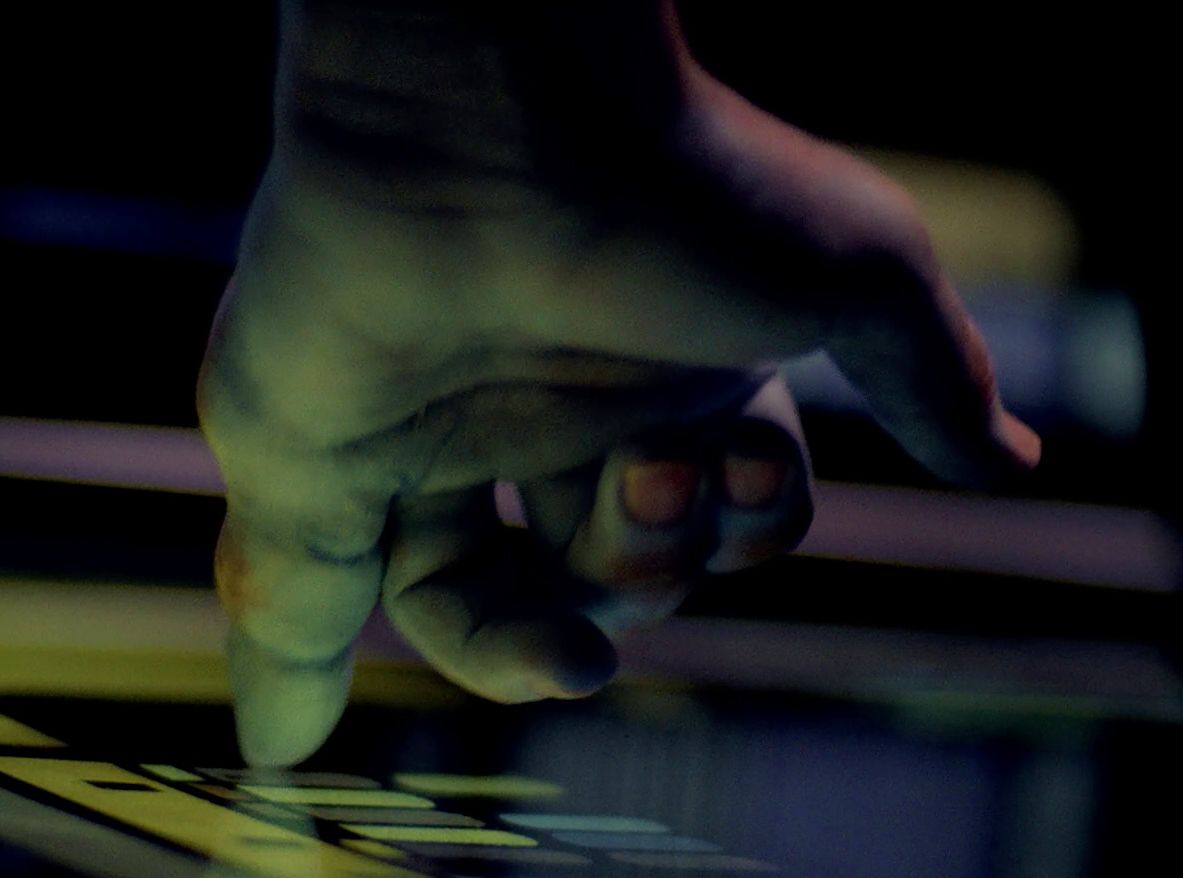
Bringing Benzites Back for ‘A Matter of Honor’
After ‘Coming of Age’, Putch was hopeful that he would get asked back to Star Trek: The Next Generation, especially with his contact on the inside. Hence, when he was offered the chance to appear as Mendon in the Season 2 episode ‘A Matter of Honor’ (S2, Ep8), he thought it might lead to more.
“I was so pleased because they called and said, ‘Are you available to do another Star Trek playing the Benzite again,’” says Putch. “I was going, ‘Fantastic, they love me, maybe I’ll get to be on the show more often than not.’”
Early in ‘A Matter of Honor’ Mendon and Wesley meet on the Enterprise and the latter thinks the Benzite is his old friend Mordock because, aside from being dressed in a Starfleet uniform, this new Benzite could be Mordock’s twin. Mendon quickly corrects Wesley, however, and the similarity is explained away as the two Benzites being from the same ‘geostructure’. Yet, in reality, there was a more pragmatic reason why the two characters looked the same. Putch admits that when he realized this, it brought him down to earth.
“This is just how tunnel vision actors can be: I really thought they hired me because they liked what I did the last time and that I did a good job and everything,” Putch explains. “I’m not saying I was bad – they were probably happy that I was competent. But as a filmmaker-director, I now know the real reason: they had spent time and money making this blue head for me. Why would they cast somebody else when the same guy is available? [They were thinking], ‘We don’t have to make any changes or make a whole new thing, let’s get that guy’.
“They didn’t care that it was a different character; they all look the same. They put me in it, gave me a different name, and they said, ‘Hey you’re playing this guy now, and you’re in a Starfleet uniform.’ I was super happy about it but as time went by and I became smarter about things, I realized that if I were doing that show, that’s exactly what I would have done. [I would have said], ‘We’re not spending another $5,000 to make a thing for that guy when this guy is available. Get the Putch guy. It’ll fit him.’ I’m sure that was the reason, but it didn’t matter, I was enjoying it anyway.”
Although bringing Putch back meant the makeup department wouldn’t have to blow the budget, they were able make some subtle cosmetic improvements to his makeup. Keen-eyed viewers would therefore see that Mordock and Mendon were not completely identical.
“I think they did give it more texture and I guess they made it less blue, and there was a bit of brown speckled onto there just to give it a shape and shadow, but it was still the same headpiece,” Putch says. “The thumbs might have been different and the little tendril things and the chin piece was separate, and then they stick stuff on there. But you would only know it was me if you knew my voice and you recognized my mouth and my lips and my mannerisms when I play aliens with blue heads.”
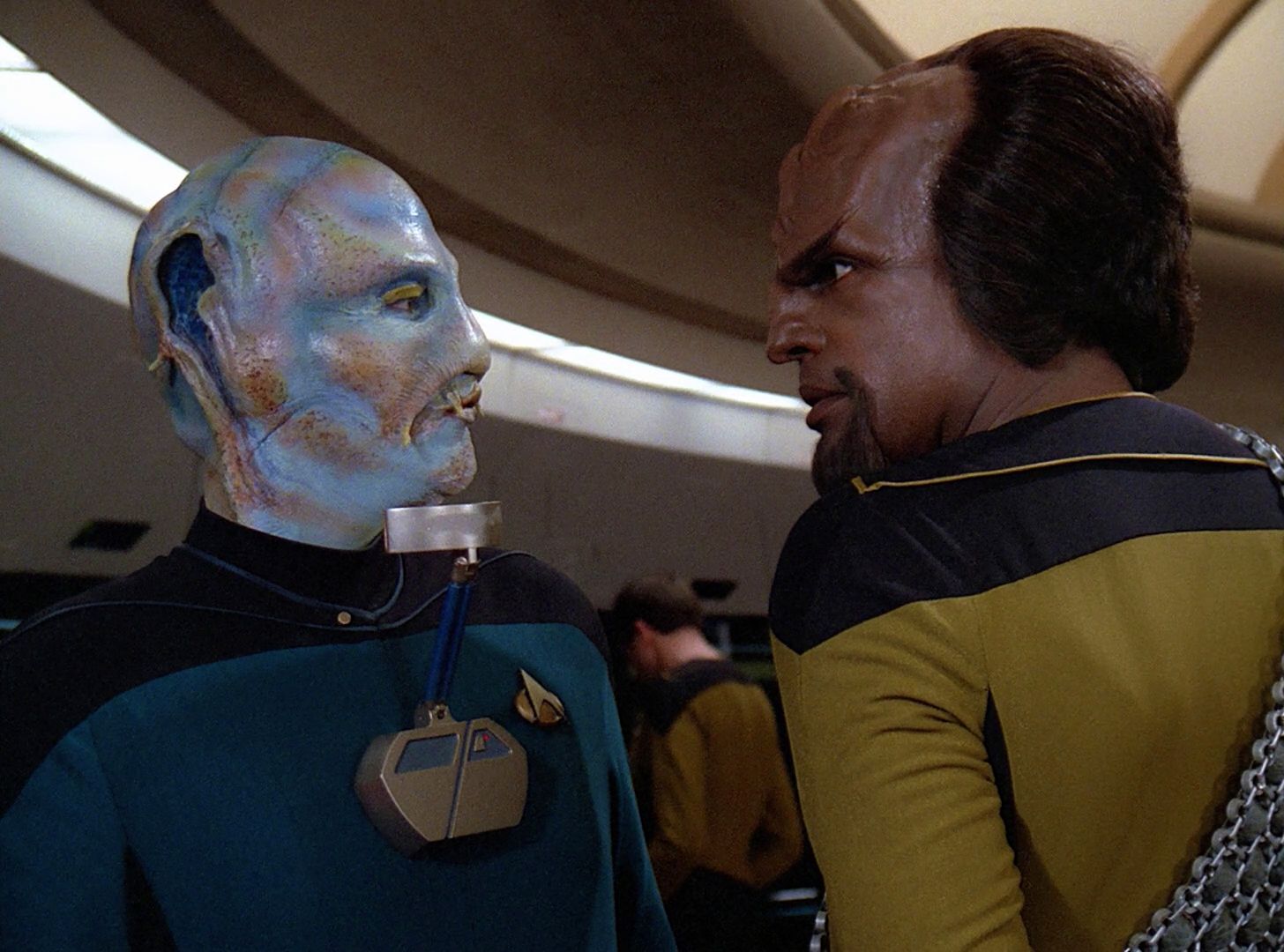
As an independent filmmaker who has learned that you keep the budget tight where you can, Putch respects that it was pragmatism as much as talent that got him the role of Mendon. Even so, he was grateful for the opportunity, especially since ‘A Matter of Honor’ got him up close and personal with Star Trek: The Next Generation’s main cast.
“The second one I did was really more fun because I got to interact with Patrick Stewart,” Putch recalls of the meticulous Mendon. “I was on the bridge, basically. I was the guy that bugged the crap out of the crew because I was constantly commenting on the job they were doing. I was the nudnick Benzite. I got yelled at by Captain Picard, and I got the stink eye from Worf and all these guys. They were all so great. That was pretty fun.
“And I got to wear the girdle. All the guys got to wear girdles under their tunic things so they all looked slim and svelte just like they did when Shatner and Nimoy and DeForest Kelley were doing it – they all wore the girdles. So, I got to wear the girdle. I needed it and it was fun.”
Putch was able to geek out between takes, too, as he could wander around the Paramount lot from stage to stage looking at the other sets that were being built for future episodes. “I was just astonished by it. It was great!” he says. “I wasn’t just a typical actor sitting in my chair waiting to go on set – I was literally out prowling in my blue head.”
Putch was unlikely to be challenged with the Benzite makeup on as it was clear that he had a good reason to be on the studio lot. Even so, security was tight, he remembers, and strict measures were in place to make sure no props or other souvenirs were removed from the property.
“Whenever you left the set, they would take your communicator pin off you and anything of value because Star Trek fans are nuts and they’ll come and get you and take it,” Putch says, jokingly. “Or they didn’t want us to steal it, because it was tempting. Everyone wanted a little [something]. I wasn’t wearing one in the first episode but in the second one, I did because I was on the ship as a group member. That little communicator with the logo, that thing was gold. You’d have to give your driver’s license to the prop man in exchange for your pin each day.”
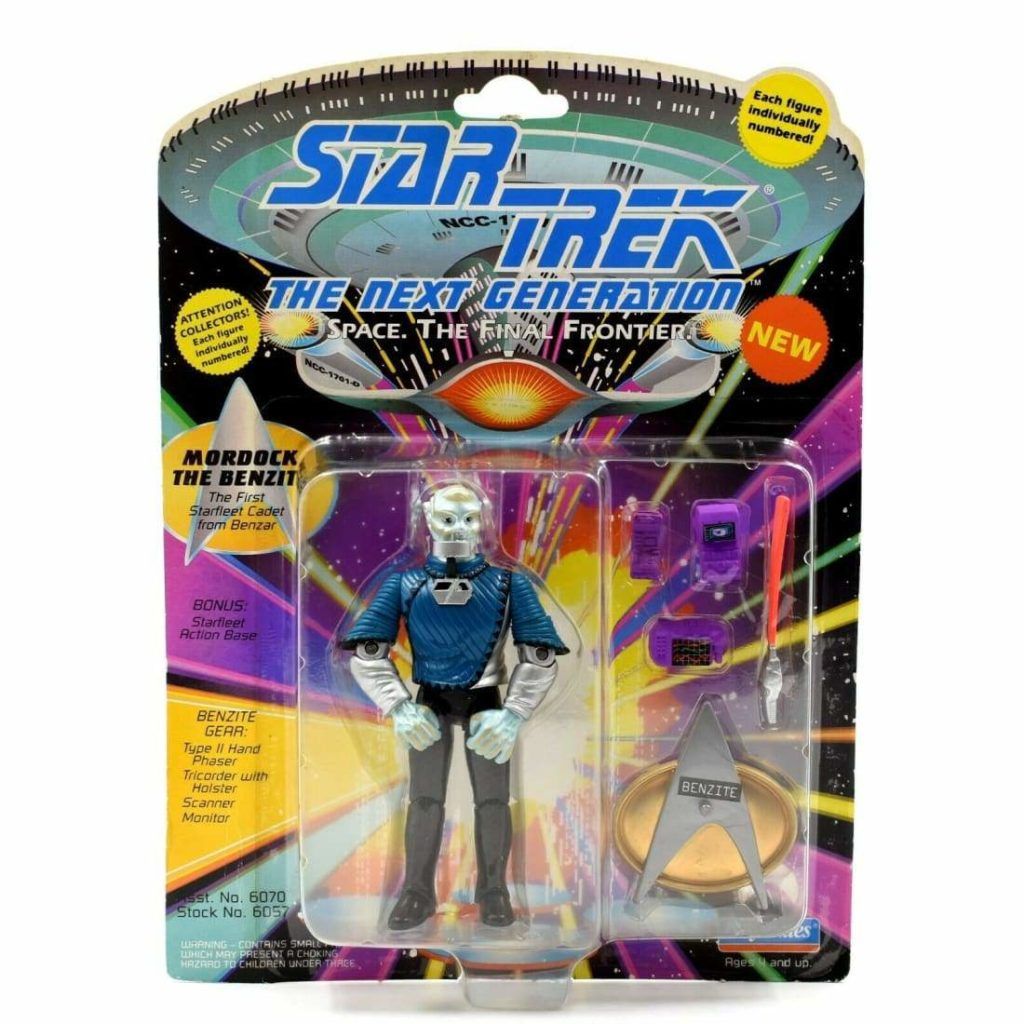
Putch never got a third outing on Star Trek: The Next Generation. Nonetheless, learnings from his experiences as Mordock and Mendon may have been passed on to Star Trek: Deep Space Nine as that show featured a female Benzite, played by Hilary Shepard, who didn’t have a breathing apparatus. Moreover, Putch’s portrayal has been preserved in plastic for future generations in the form of a Playmates Mordock action figure, complete with mouthpiece and a Collectors Card (which actually shows a picture of Mendon in his Starfleet uniform). Putch has also appeared on Star Trek trading cards.
Yesterday's Enterprise
Putch was not quite done with the Star Trek universe after ‘A Matter of Honor’, though. As a legacy of his Star Trek: The Next Generation appearances, he would get another opportunity to go aboard Enterprise with a small role that would take him back to an earlier time as a fan and in the franchise’s continuity. This part wouldn’t require much makeup, but it would put Putch on the big screen again and face-to-face with a Star Trek legend.
“When they were doing the Star Trek: Generations movie, Junie, the casting director… her idea was, ‘I’m gonna call all the great actors we had on the show and I’m going to try to have them do cameos in the first movie,’” Putch explains. “So, I was in Generations, not playing that guy obviously but playing a reporter on the bridge, and I worked with Captain Kirk, which was a whole amazing week of seeing that guy in action on a set. It was pretty funny. A lot of people didn’t do it because the parts were too small and they were bigger stars or whatever, [but] I was like, ‘Are you kidding me? I’ll come in and do a line. I don’t give a shit. I gotta get on that stage and see what happens there.’ And it worked out – I had like a week on the bridge and I had one or two scenes where I interacted with Shatner. The best part about it is that I was on that bridge for a week and Jimmy Doohan was there, and Walter Koenig was there, and those guys are salt of the earth. Loved those guys.”

Working with all three of the Original Series actors on Star Trek: Generations (1993) was a thrill, Putch recalls. Nonetheless, it was Shatner who got most of his attention as Kirk was the character that Putch’s reporter was focused on. Shatner was also the big star on set and he was exactly how you would expect him to be based on his reputation, Putch remembers.
“He literally did not treat me as an actor, he treated me like an extra, and he would not talk to me directly,” Putch recalls. “We would literally be rehearsing the scene with him, in front of him, and he’d be talking to the director about me in front of me. I was like, ‘Dude, I was on a television series for six years, I’ve been in giant TV movies, I starred in Jaws 3-D.’ I didn’t say that, but like, I’m sitting there going, ‘I know he doesn’t know who I am, but no-one told him that everybody here is a working actor?’ He would be talking to David Carson and I literally would go, ‘Hey Bill, Bill, I’m right here.’ I was the guy that he probably despised, and I didn’t care because I loved watching what he did. He was truly the William Shatner that you always thought he would be: absolutely the most self-absorbed, funny, pompous guy ever. I found that very entertaining, so I watched him like a hawk the whole time and got to see some amazing things.”
One event involving Shatner that stands out in Putch’s memory occurred during the filming of the sequence in which Enterprise is being buffeted by the energy ribbon known as the Nexus. The bridge set was rigged to move for these scenes and the actors had to respond accordingly. As Putch remembers it, during one take Shatner literally went over the top.

“There was a scene where the ship rocks and we all had to do that fake thing where they tilt the camera and everybody goes ‘Arghhh!’ He was right behind us on the deck above, on the railing. The whole ship was on hydraulics, the bridge I mean – they must have spent so much money – and it shakes, and we all go like this [Putch moves to one side suddenly]. All of a sudden, Tommy Hinkley, my friend, who’s my reporter cohort, looks up and William Shatner is flying over his head. He actually hit Tommy’s head as he was flying over. He went over the railing and tumbled down into the carpet in front of us.
“The whole place just stopped, and everyone gasped, and Shatner goes, ‘I’m fine, I’m fine.’ He’d done the Shatner so hard that he broke the railing on the set. Oh my God, I have no idea how to compare it, but it was like the biggest thing ever. The grips spent at least two hours chaining, screwing, fixing, fortifying that thing so we could do another take, and like, eight million people just came around and the chair got slid under his ass. They brought him the tea, whatever he needed, and he got all the attention he needed and then we went at the scene again. It was really funny.”
Like Kirk, Putch had his Star Trek swansong with Star Trek: Generations. Around that time he was also making the transition from acting to film production. Starting in the late ‘90s with BettleBorgs, his name appeared as director on the credits of a host of TV episodes and some mini-series and movies, including The Poseidon Adventure, Scrubs, American Housewife, and, most recently, You Had Me at Aloha, a 2021 Hallmark film starring genre regular Kavan Smith (The 4400, Stargate: Atlantis, Supernatural) and Sanctuary’s Pascale Hutton. He has also made several independent movies, such as Mojave Phone Booth with Stargate SG-1 alumnus David DeLuise and Cocoon’s Steve Guttenberg, and The Father and the Bear, which features both DeLuise and Robert Picardo.
Ironically, aside from Star Trek, Putch’s acting and directing work has largely skirted sci-fi, although he would love to make his own genre movie, he tells us. He admits that he also hasn’t watched Star Trek since Deep Space Nine. Even so, he is grateful for having had the opportunity to work with some of the show’s legends and he continues to be amazed by Star Trek’s reach, which is evidenced by the connections he has made throughout his career.
“I know so many people in them,” Putch says. “Bob Picardo is a friend of mine. I met him at a poker game at a friend’s house, who also was in a Star Trek episode. We all did that show back then. It was like, if you were an Aaron Spelling actor, you would always appear on Love Boat, Hotel, Dallas, and Dynasty. If you weren’t in that group, which clearly I am not [Putch smiles], you’d be doing the other shows. We all have that on our resume: Star Trek: The Next Generation or Voyager or whatever it is.”
This article was first published on October 13th, 2021, on the original Companion website.
The cost of your membership has allowed us to mentor new writers and allowed us to reflect the diversity of voices within fandom. None of this is possible without you. Thank you. 🙂




